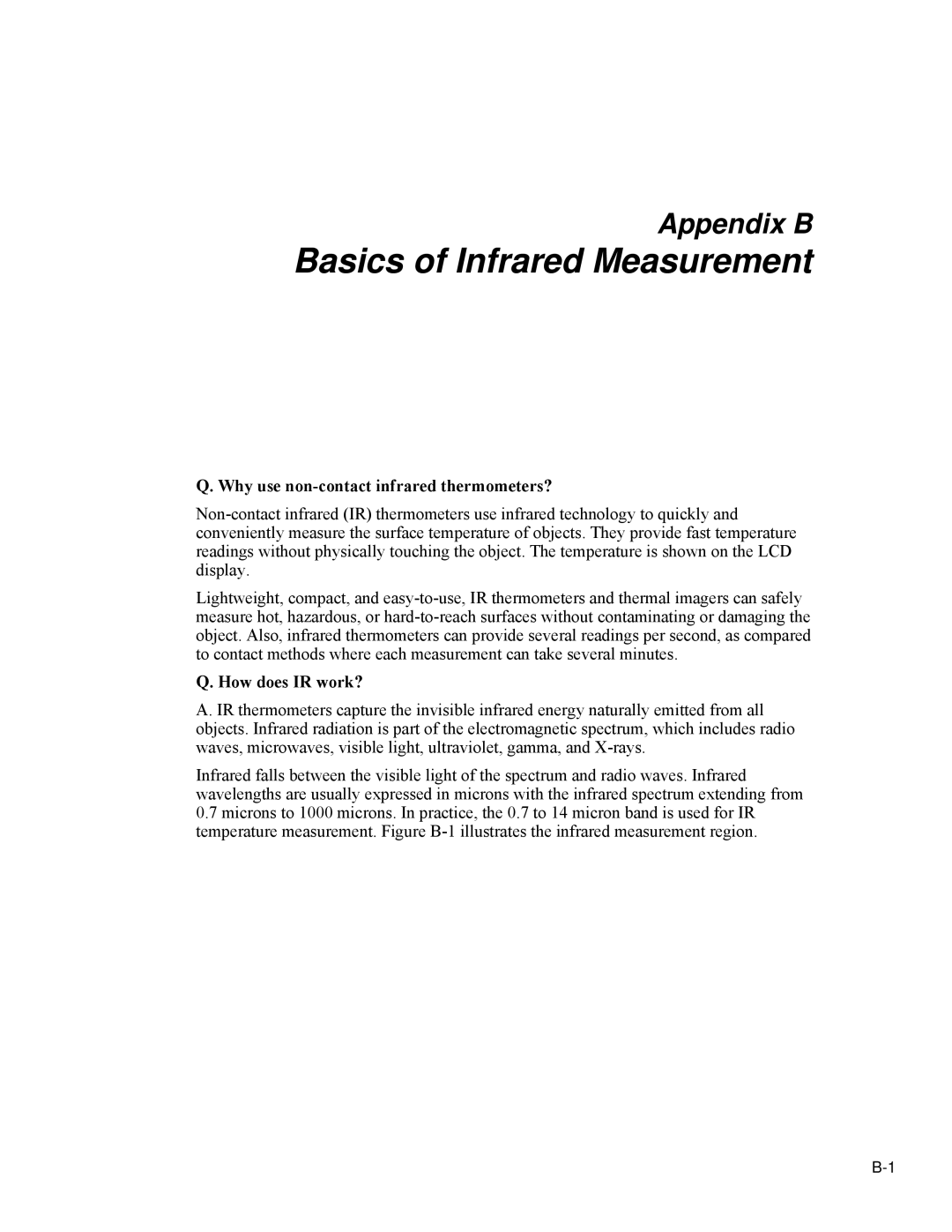Appendix B
Basics of Infrared Measurement
Q. Why use non-contact infrared thermometers?
Lightweight, compact, and
Q. How does IR work?
A. IR thermometers capture the invisible infrared energy naturally emitted from all objects. Infrared radiation is part of the electromagnetic spectrum, which includes radio waves, microwaves, visible light, ultraviolet, gamma, and
Infrared falls between the visible light of the spectrum and radio waves. Infrared wavelengths are usually expressed in microns with the infrared spectrum extending from
0.7microns to 1000 microns. In practice, the 0.7 to 14 micron band is used for IR temperature measurement. Figure
